Congress began debating policy options for addressing climate change more than three decades ago but its first comprehensive legislative strategy to address any greenhouse gas was delayed until last December. This was hardly a moment of bipartisan conviviality in Congress and yet it produced an historic agreement to phase down hydrofluorocarbon (HFC) us-e with broad co-sponsorship from both parties. What propelled this legislation? Is it a fluke or a case that offers broader lessons for other greenhouse gases such as carbon dioxide, methane, and black carbon?
HFCs may be destined to go down in environmental history as the ultimate two-edged technological sword. Their rapid development and deployment around the world in air conditioning and refrigeration systems as well as a range of commercial foams and aerosols played an essential role in curbing ozone layer depletion. HFCs enabled the Montreal Protocol on Substances that Deplete the Ozone Layer to become a model of effective international environmental governance, one that included a central American role.
Ozone-protecting features of HFCs, however, are offset by their role as a formidable “short-lived climate pollutant.” Much like methane and black carbon, their impact is particularly intensive during decades immediately following release into the atmosphere, making them potentially attractive political options for producing near-term climate benefits.[1]
Montreal’s ongoing review process turned to HFCs more than a decade ago, culminating in the 2016 Kigali Amendment. This added HFCs to its list of controlled substances and specified a phase-down process that began three years later for 120 participating nations. Full Kigali implementation is expected to reduce 21st Century global warming one-half degree (Celsius) below temperature levels under continued HFC use. In the United States, earlier Obama administration efforts to devise regulations through the Clean Air Act met federal court resistance, Congress repeatedly failed to establish a legislative path toward HFC reduction, and the Trump administration showed distain for Kigali or any other environmental treaties.
This set the stage for the stunning passage of the American Innovation and Manufacturing Act (AIM Act), embedded within a legislative package including $900 billion for pandemic relief. It outlines a transition for an 85% phase-down of both HFC production and consumption by the mid-2030s and replacement with alternatives, a process consistent with Kigali targets. EPA has seized upon this rare arrival of new environmental legislation with prompt issuance of a proposed rule, including exceptions for such items as inhalers, bear spray, and aviation fire suppressants that were politically or technically sensitive. It is also exploring related steps, including plans for accelerated transition if rapid technological advancement occurs and complementary strategies such as inspecting for leaks and reclaiming old appliances.
In short, the system worked in this case, placing the United States on a path to address this slice of the climate challenge. Most notably, the AIM Act secured broad bipartisan and bicameral support, despite its timing amid post-election brawling. Members from both political parties justifiably claimed credit upon passage, including senators such as Louisiana Republican John Kennedy and Delaware Democrat Tom Carper.
This bipartisan harmony shows no sign of translating into a comprehensive model for other greenhouse gases in the 117th Congress. But three key factors propelled this legislative package, potentially offering some lessons for other climate policy options, including those directed at other short-lived climate pollutants.
First, the emergence of technically and economically viable alternatives to HFCs made rapid transition both feasible and politically appealing. It also created significant industry divides. Just as some firms led the legal charge against EPA in the Obama era, groups like the Association of Home Appliance Manufacturers and Boeing registered strong concerns about the proposed legislation. But these were countered by large entities such as the Air Conditioning, Heating and Refrigeration Institute, Honeywell, and Chemours who embraced rapid transition. Broader groups such as the U.S. Chamber of Commerce ultimately came on board as well. This split neutralized the ability of industry opponents to deter policy development, unlike the long-standing ability of unified fossil fuel interests aligned across a long supply chain from extraction to final use to block carbon policy.
Second, states retained considerable latitude to address HFCs and dramatically expanded related policies during the three years before Congress acted. The U.S. Climate Alliance emerged in 2017, offering states a rallying ground to counter President Trump’s withdrawal from the Paris Agreement on climate. The Alliance prioritized short-lived climate pollutants such as HFCs and methane, highlighting emerging state policy models. California played an early role, including 2018 legislation to reduce HFC releases and funding from carbon cap-and-trade auctions to speed transition to alternatives by supermarkets and industries. Ultimately, nine states adopted new HFC legislation between 2018 and 2020 and proposals were pending in six other states when Congress approved the AIM Act.
Individual state policies varied, triggering industry concerns about navigating a patchwork quilt, and federalism differences nearly scuttled the legislation. Wyoming Republican Senator John Barrasso sought federal preemption of state policies whereas many Democrats championed an ongoing state role. Divides were ultimately reconciled through a balancing act that restricts states initially but allows longer-term involvement. This agreement has strong parallels to the way in which federalism concerns were managed in 2016 when Congress passed the Lautenberg Chemical Safety for the 21st Century Act, one of the few major federal environmental laws adopted in the last three decades. In both cases, substantial state policy adoption provided models for federal emulation while prodding Congress to act.
Third, state push of the federal government was complemented by an international pull as Kigali implementation ensued and some nations further accelerated their transitions. Kigali raised the specter of ever-declining global HFC use alongside steady decline of future American export options for HFC-laden products. Canada launched federal transition plans a year before its 2017 Kigali ratification. It committed to reduce HFC consumption by ten percent in 2019 and pursue deeper cuts by 2024 and 2029, while moving toward a ban on any HFC-related trade with nations that had not ratified by 2033. Europe moved even more aggressively, including nations such as Denmark, Norway, and Spain that adopted supplemental HFC taxes to further accelerate transition. More than 26,000 EU supermarkets had adopted lower-impact refrigerants by 2020 as opposed to only 600 in the United States.
Would American industry want to increasingly go it alone on HFC use and policy? Neither China nor India has yet ratified Kigali, suggesting the possibility of continued market access for American exports. But Congress concluded that the global trend was evident and chose not to risk possible loss of key market access. Legislative supporters from both parties highlighted anticipated trade and job gains through AIM Act passage. Still to come is the question of formal Kigali adoption and whether the Senate can move beyond statutory commitment into international accord ratification. Despite its new legislation, the United States could ultimately lose international market access without a two-thirds treaty vote. This would not be the first time that the nation squandered an early lead in developing climate-friendly technologies, such as solar energy.[2]
The AIM Act joins the 2016 chemical safety legislation in providing contemporary examples on how Congress can engage environmental issues with reasonably broad support across parties, regions, and chambers.[3] Evidence from initial months of the current Congress, however, suggests that the AIM Act remains an anomaly rather than a model. Biden era efforts to reframe major climate investments as infrastructure face deep partisan divides. There are no guarantees that slender Democratic majorities can hold together to adopt bold legislation bundling hefty green expenditures with clean electricity standards or other regulatory provisions, much less pick up any Republican votes.
Debate over other short-lived climate pollutants remains highly partisan and divisive, despite potential political upsides in terms of significant near-term climate impacts. Cost-effective mitigation options abound in reducing methane releases from oil and gas production, routinely referred to as climate policy “low-hanging fruit.” But even efforts to use the Congressional Review Act to restore relatively modest methane standards for new wells secured only three Republican Senate votes and have relied exclusively on Democrats in early House committee tests.
At the same time, the methane policy landscape has changed in ways unthinkable just a few years ago. Technology to measure releases has steadily advanced, demonstrating with growing precision that industry performance on methane varies markedly. Industry in turn is increasingly divided over whether to address emission minimization as a priority or an annoyance to be deferred as long as possible. A small but growing set of production states, most notably Colorado and New Mexico, have accelerated a policy transition from historic industry accommodation toward comprehensive emphasis on performance outcomes.
Canada has also taken the North American lead on this short-lived climate pollutant, developing a federal set of regulatory standards while also investing heavily in new technology deployment and remediation of thousands of orphan well sites scattered across its vast landscape. The European Union increasingly contends that it will establish tough methane standards for future natural gas imports, at the very point Gulf of Mexico producers seek expanded markets for liquified natural gas to compete with Russia. Comprehensive methane mitigation bills are being introduced into the 117th Congress, after years of punting the issue to executive agencies. In many respects, American methane politics is evolving, albeit at a considerably slower pace than HFCs.
As the United States joins other nations in preparing for an all-important global climate summit this November in Glasgow, its HFC experience may be celebrated as a rare triumph. As Hawaii Democratic Senator Brian Schatz said immediately following AIM Act passage: “This agreement proves what we know to be true: climate action is good for businesses and innovation. We still have a lot of work to do, but hopefully this sets the stage for the bigger, bolder policies we’ll need to address this planetary crisis.”
I am grateful to Kristin Prestel for research assistance.
[1] David Victor, Durwood Zaelke, and Veerabhadran Ramanathan, “Soot and short-lived pollutants provide political opportunity,” Nature Climate Change 5 (2015): 796-798.
[2] Gregory F. Nemet, How Solar Energy Became Cheap: A Model for Low-Carbon Innovation (Routledge, 2019).
[3] James M. Curry and Frances E. Lee, The Limits of Party: Congress and Lawmaking in a Polarized World (Chicago: University of Chicago Press, 2020).
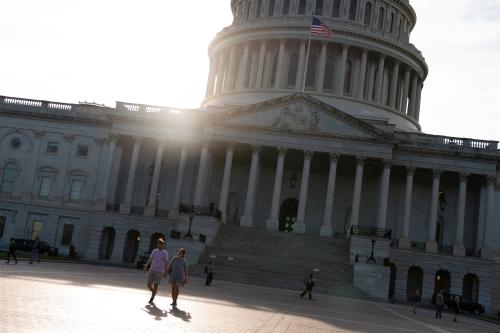

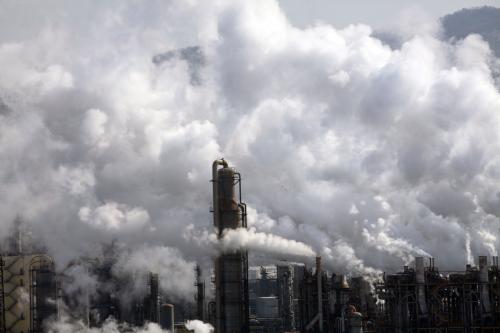




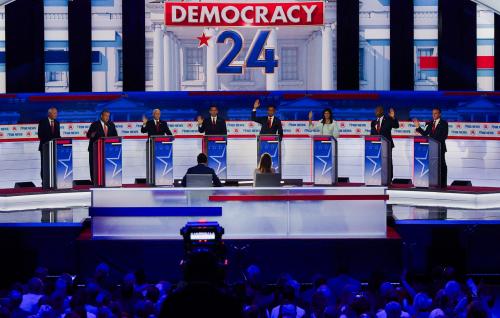
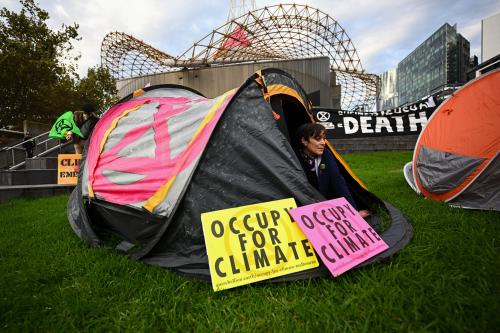
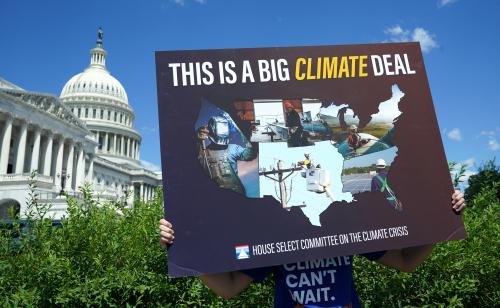
Commentary
When climate policy works: HFCs and the case of short-lived climate pollutants
June 24, 2021